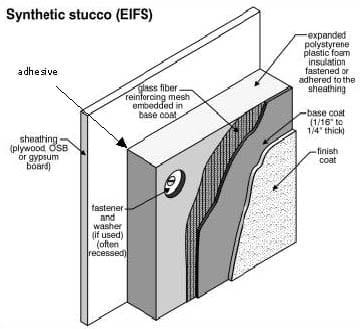by admin | Feb 15, 2025 | Our Most Common Stucco Questions, Stucco Bond or Guarantee, The Stucco Warranty
The warranty covers expenses incurred for stucco repairs when elevated moisture levels are detected during the warranty period. It facilitates the modification or repair of the affected areas to restore dryness. To obtain a warranty, the residence must undergo...

by admin | Aug 23, 2024 | Our Most Common Stucco Questions, Stucco Bond or Guarantee, Stucco Homes, The Stucco Warranty
The Problem With Stucco and EIFS Homes Synthetic stucco, also known as Exterior Insulating and Finish System (EIFS), is a popular choice for home exteriors due to its aesthetic appeal, design flexibility, and energy efficiency. However, EIFS homes have faced...
by admin | Feb 16, 2012 | Our Most Common Stucco Questions
There are a variety of issues surrounding synthetic and hardcoat stucco homes – the negative stigma associated with stucco homes and a reluctance by agents to buy or sell stucco homes are just two. Many of the issues can be mitigated by having a MoistureFree Warranty...



Recent Comments